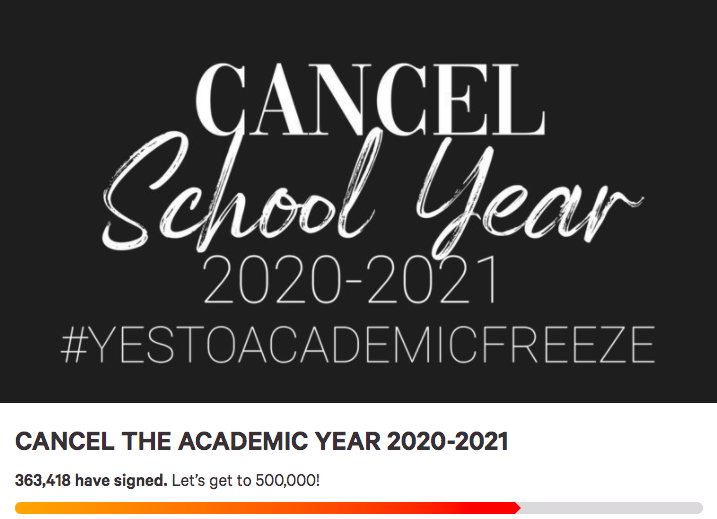
When lockdowns were imposed in different parts of the world during the onset of the pandemic, schools were forced to close down, leaving teachers to change and update their teaching methods. What billions of students across the globe thought would be just a short break from school has now become a long-running worldwide large-scale experiment into online learning.
Looking back, online education has conventionally been viewed as an alternative approach that particularly suited adult students seeking higher education opportunities while working. Only a few educational institutions were offering online classes or blended learning methods.
When the pandemic hit in 2020, schools in 191 countries had to switch from offline to online classes, interrupting at least nine out of 10 students globally. From preschools to universities and colleges, classrooms were transformed digitally through Zoom, Google Classrooms, and Microsoft Teams.
Immediate Effects of COVID-19 on Education
At the onset of the pandemic, businesses, offices, markets, airports, and other places, including schools, had to immediately halt their operations to contain the virus as scientists scrambled to make sense of how COVID-19 behaves and affects people and how to combat it. The thing is, students must continue learning online. But instead of learning from inside classrooms, they tried to learn from their homes. Teachers proved that education could continue amid a global health crisis by utilizing online learning resources. Digital tools have become necessary and useful more than ever.
Video conferencing tools, language applications, online learning software, and other educational resources saw a large spike in users as students and teachers adapted them. In return, these tools changed and developed according to their users’ needs. Several online learning resources offered most, if not all, of their services for free so that people would use it because if they had to pay, they might be more reluctant to try it.
The pandemic has shown how education is improving in the digital age, especially in the middle of a crisis where teaching a physical class is impossible. Moreover, the situation has also shown that online learning is comparable to face-to-face education.
The Digital Divide
However, is online learning as effective in the eyes of students?Research shows that students retain 25–60% more information through e-learning compared to only 8–10% in an in-person classroom. E-learning takes 40–60% lesser time than traditional learning, allowing students to learn at their own pace.
Evidence shows that e-learning can actually improve learning more effectively than traditional education, suggesting that the changes brought about by COVID-19 may be here to stay.
However, there are challenges to overcome. UNESCO data showed that over 1.6 billion students in more than 190 countries worldwide were out of school during the peak of the COVID-19 crisis. In 2021, more than 800 million are still affected by school closures.
In the Philippines, around 5 million Filipino learners failed to enroll for the school year 2020–2021, mainly due to financial problems caused by the pandemic. The crisis left millions—and counting—jobless and unable to support their families.
The sudden shift to online learning also highlighted the digital divide among students, with many learners airing difficulties due to their lack of technological resources.
This led the government to develop alternative strategies, including a provision of printed learning materials, to assure parents that not having gadgets does not mean their children cannot continue learning. Highest-paying jobs in remote learning include cloud architects, machine learning engineers, and DevOps engineers. However, many parents still decided to let their children wait out the school year despite these efforts.
In the early months of the pandemic, calls for an “academic break” emerged. More than 363,000 netizens signed a Change.org petition to cancel the school year 2020–2021, while several groups and netizens urged educational institutions to declare an academic break as students and teachers recover from the effects of back-to-back super typhoons.

Students have begun airing out the difficulties they face in online learning. Some of these include unstable internet connectivity, inadequate learning resources, limited teacher scaffolds, conflict with home responsibilities, poor learning environment, financially-related problems, and compromised physical health. Virtual science lab experiments enable students to safely explore scientific concepts and perform experiments remotely. Additionally, these challenges take a heavy toll on students’ mental health.
How does online learning affect mental health? Just like office workers, students were also prompted to stay in their homes in the wake of COVID-19 strictly. With the boundary between classroom and home blurred, students have felt struggles with their mental health. Common mental health effects of online learning include:
- “Zoom Fatigue” – The exhaustion after long periods of Zoom classes or video conference calls, plus the sudden overwhelming dump of information
- Lack of interaction and social isolation – Kids and teens spend more hours every day facing screens than interacting with others. This leads to feelings of loneliness, lack of motivation, and isolation.
- Increased anxiety and stress – E-learning allows students to study in their own space, but separating life at home and class schedules can cause a lack of concentration and procrastination, which in return results to pressure, stress, and anxiety.
However, the number of students who entered another year of online classes proved that these challenges are manageable and, ultimately, have solutions.
A Change for the Better
The COVID-19 pandemic has undoubtedly ushered in beneficial changes to the way classrooms operate through online learning. According to School of Education professor Yong Zhao, the pandemic ignited a worldwide learning experience spurred by technology, albeit the lack of experience, training, and resources. He argued that the pandemic moved educators to action.
Second, online learning drastically expanded the way learning happens. Having access to online technologies meant students could explore more resources without being interrupted and learn way beyond classrooms.
Third, students do not have to constrain learning to specific schedules with online learning compared to traditional schooling, limiting them to in-school and homework times. And fourth, knowledge-building is no longer limited to classrooms or schools. Students can learn at home.
However, Zhao argued that e-learning does not automatically make learning better,“It only provides the opportunity for schools to rethink how education can be offered.”
As students slowly go back to the classroom, online learning will probably remain one of the methods used to gain knowledge, as many have seen its efficiency throughout the pandemic. There is a possibility that after the pandemic, when attending school is once again safe, the innovations that resulted from online learning will be here to stay.
Author’s Bio:
Sam is the Digital Marketing Manager of Bukas, a Fintech startup that provides access to quality education through affordable tuition installment plans. On weekends he works as a volunteer tutor teaching English and Math to elementary students from public schools.
